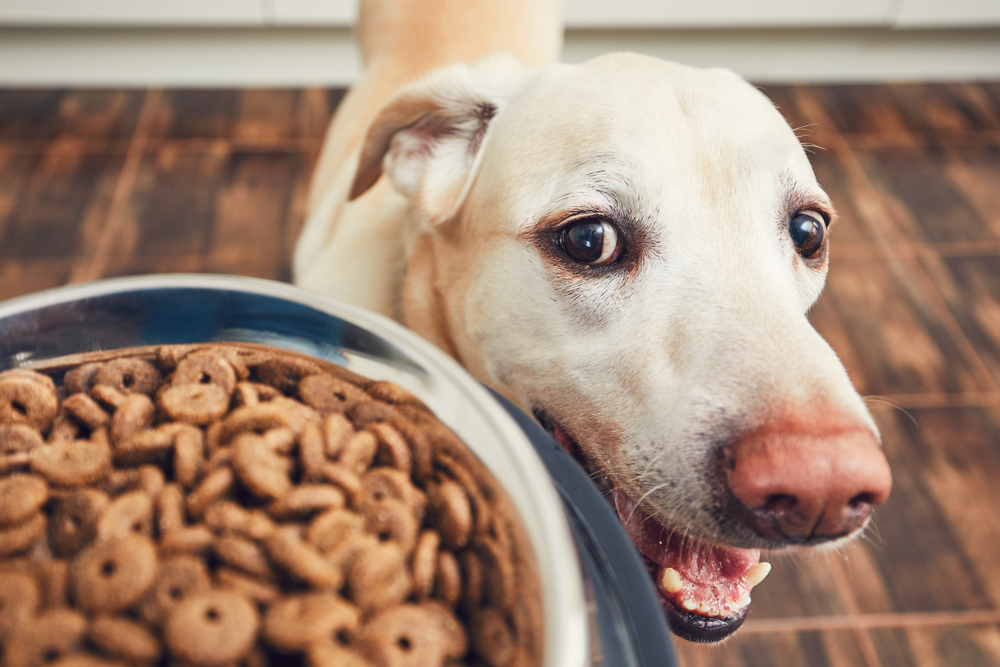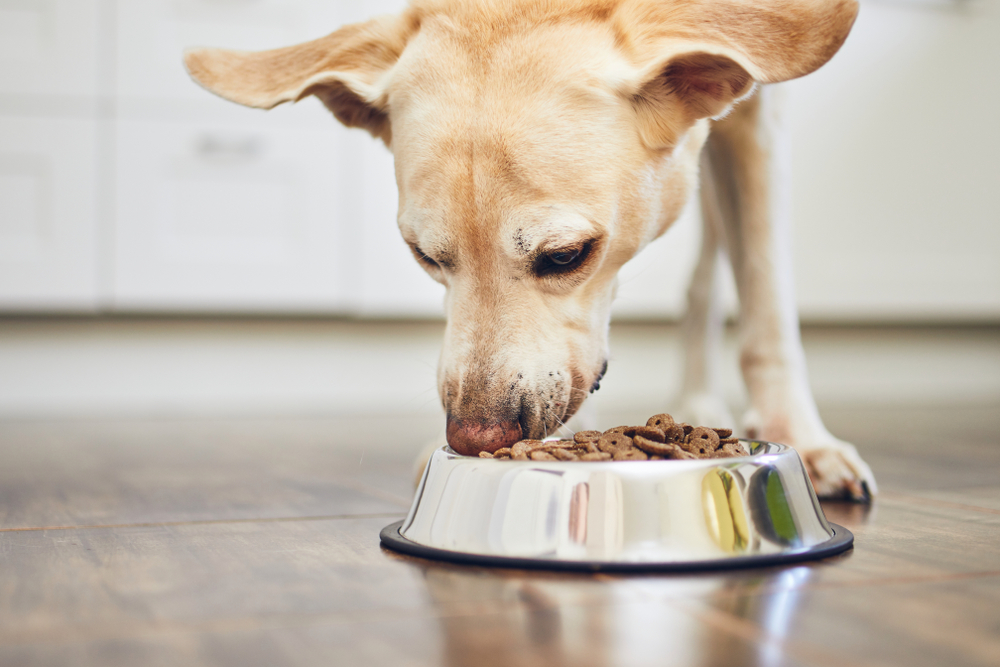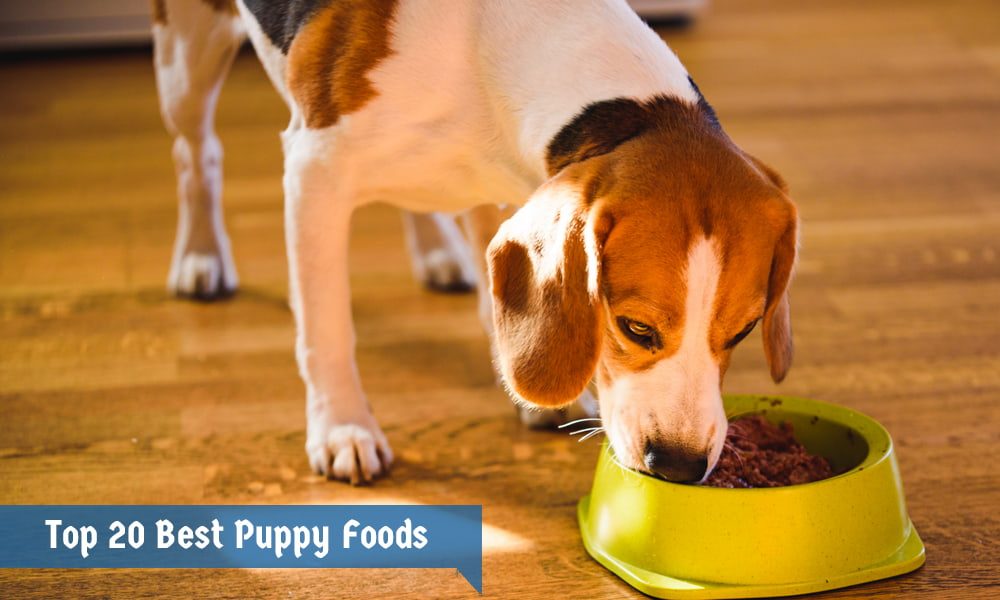
All dog owners want to ensure that their canine companion’s diet comprises healthy and nutritious natural ingredients that can sustain their long-term health.
This is why it is so important to look at each ingredient in a dog food package to ensure it is free from components that contribute nothing to your dog’s health or, even worse, could potentially cause harm to your dog’s digestive system.
This is why we will take a deep dive into one of the most common pet food fillers that is also relatively low in nutrients: corn.
To help you choose the right food for your beloved pooch, we have highlighted some of our top picks for the best dog food without corn on the market today. Read on to find a trustworthy dog food you can feel confident feeding your furry friend.
Contents
Top Five Reasons to Avoid Dog Food That Contains Corn
While corn is not considered to be toxic for dogs, it should be avoided, especially in large volumes.
As you will learn, dog food manufacturers that include large volumes of corn in their products usually do so to reduce manufacturing costs rather than because they have a genuine interest in offering a highly nutritious and balanced dog food blend.
To further explain why you should avoid corn, here are the most important reasons:
1. Corn Can Be Difficult for Dogs to Digest
The hull of corn is difficult for dogs to digest, which means the corn will move through the canine digestive system without the dog absorbing any nutrients within the corn.
Even though corn does contain nutrients dogs need, like potassium, linoleic acid, and glucose, those essential nutrients will not be absorbed if the dog’s digestive system cannot break the corn down.
So, the corn in the dog food fills the dog’s stomach, which makes the dog feel satiated, but a significant amount of the nutrients within the food cannot be absorbed. This is why corn is typically used in dog food as a low-cost filler. It is a cheap ingredient that fills the dog and helps add weight to the kibble, canned food, or wet food, but the dog needs to eat an enormous volume of the food to receive any of the benefits from the corn.
By choosing a dog food that uses a more digestible ingredient as the primary source of carbohydrates, such as brown rice, sweet potato, or oats, your dog will absorb more of the beneficial ingredients from the food than if they are provided with a dog food that contains corn as a primary ingredient.
2. Refined Corn Raises a Dog’s Blood Sugar More than Whole or Refined Grains

Even when the corn used in dog food is refined into flour or meal to make it more digestible, it still poses problems for canines. This is because refined corn has a higher glycemic index than non-refined or whole corn.
The glycemic index is a scale nutritionists use to rank a carbohydrate-containing food or drink’s capacity to raise blood glucose after it has been consumed. Foods with a high glycemic index, like refined corn, increase blood sugar higher and faster than foods with a lower ranking. Consider reading the United Kingdom National Health Services guide – What is the Glycemic Index (GI)?
Essentially, consuming high volumes of dog food that contain ingredients that can increase your dog’s blood sugar levels will significantly elevate its risk of developing debilitating diseases like diabetes. Instead, you should give your dog food containing carbohydrates that do not have the same impact on its body’s blood sugar levels.
Rice, quinoa, oats, and potatoes are good alternatives to refined corn, as they do not raise blood sugar levels to the same degree.
3. A Significant Percentage of Dogs Have a Corn Allergy
While the exact percentage of dogs that suffer from a corn allergy is debated, there is no doubt that it is a fairly common canine food allergy. If your dog has a sensitive stomach or is generally susceptible to food and environmental allergens, there is a reasonable chance that it will also experience allergy-like symptoms when they consume a significant amount of corn.
Not only is corn itself known to be a common trigger for canine allergies and food sensitivities, but corn is also often contaminated with other substances that can trigger sickness and allergic reactions in dogs.
This is partially due to storage procedures for corn. Unlike more valuable grains that are typically stored with greater care, corn is stored and transported in the most affordable way possible.
Since corn is inexpensive, it only makes sense that growers don’t have to be as diligent in protecting the harvested crop. In many cases, corn can be exposed to mites and their droppings. These contaminants are difficult to detect, so they often find their way into dog food. Unfortunately, mite carcasses, eggs, and droppings are also significant canine allergens.
4. Corn Is Not Rich in Vitamins and Minerals
While corn is not nutritionally void, its nutritional value is far from impressive, especially compared to the alternatives.
Dog food manufacturers almost always include some form of grain or vegetable in their dog food blends, as dogs need carbohydrates to support healthy energy levels. As it turns out, corn offers little nutritionally compared to more expensive ingredients used to fill this role.
According to the USDA’s National Nutrient Database, it has a low nutritional completeness score. The higher a food item’s nutritional score, the more nutritious it is, which means it contains a higher volume of useful vitamins, minerals, and antioxidants.
More expensive and higher quality dog foods will contain ingredients like spinach, sweet potato, and peas, which all have a high nutritional completeness score, while lower quality dog foods will substitute these highly nutritious ingredients for cheaper and significantly less nutritious ingredients, like wheat, barley, and, of course, corn.
For comparison, spinach has a nutritional completeness score of 91, while corn scores 34. These cheaper ingredients, like corn, give your dog fewer nutrients than the more expensive and nutritionally valuable alternatives.
5. Dog Foods that Contain Corn Tend to Contain Other Low-Quality Ingredients
If you are looking for high-quality dog food with the most nutritious and appropriate ingredients, it only makes sense to avoid those that use low-quality, inexpensive fillers like corn.
In most cases, if the manufacturer has cut costs by filling the food with low-cost corn and corn meal, it stands to reason that they will have cut manufacturing costs in other ways. This could mean using inexpensive meat by-products rather than fresh cuts of meat from reputable suppliers.
It can also mean they may have used potentially harmful preservatives, artificial flavors, colors, and aromas, rather than relying on better ingredients and higher-quality packaging for their complete dog foods.
Simply put, a high volume of corn should be seen as a red flag that dog food is made to a relatively low standard.
What Can You Do?
The bottom line is that corn is inexpensive, so some dog food manufacturers rely on it to replace more expensive ingredients. Unfortunately, corn also poses many issues for dogs and their digestive systems.
While dog foods containing significant amounts of corn might also be cheaper for the consumer, they are not a good idea for people who want to ensure that their canine companion is eating a nutritious and balanced diet.
Fortunately, if you are one of the many dog owners who want to avoid commercial dog foods containing high volumes of corn, there are plenty of options. Many top dog food manufacturers avoid using corn in their products; they even offer limited ingredient blends that are entirely corn-free!
To help you choose the right food for your beloved pooch, we have highlighted some of our top picks for the best corn-free dog foods on the market today. Read on to find a trustworthy dog food you can feel confident feeding your furry friend.
The Best Dog Foods Without Corn
1. Purina Beyond – Simply Grain-Free Natural Dry Dog Food

This high-quality, limited-ingredient dry food from Purina’s Beyond line is the perfect option for any dog owner looking for a corn-free option for their pooch. Not only does it contain no corn, but it’s also completely grain-free.
The primary ingredient in this grain-free dog food is real chicken, so your dog gets a high-quality source of animal protein. As you would expect, it is made 100% free from corn and several other known canine allergens, like wheat and soy. It is also made without artificial colors, flavors, and preservatives.
It is perfectly balanced nutrition for an adult dog on a grain-free diet and has all of the essential vitamins, minerals, and omega fatty acids your pooch will need to live a happy and healthy life.
2. Purina Pro Plan – Sensitive Skin & Stomach Salmon & Rice Dry Dog Food

Purina has another high-end dry dog food free from corn and corn by-products. Purina Pro Plan Sensitive Skin & Stomach replaces low-quality carbohydrates with oatmeal and rice, which are much easier to digest and offer more nutrients than the canine digestive system can absorb.
This dry food blend is also made with high-quality animal protein sources, such as real salmon and beef. It is fortified with live probiotics, which help promote a healthy digestive system. These natural ingredients are also helpful for the strength of your dog’s immune system.
Healthy fats are provided by sunflower seed oil, which is rich in omega-6. This helps support healthy skin and a healthy coat. If you are looking for pet food entirely free from corn, you cannot go wrong with the Purina Pro Plan Sensitive Skin & Stomach line.
For More Information About Corn-Free Dog Food
Whether you choose the two corn-free options we discussed above or find another dog food brand that meets your dog’s dietary needs, there are undoubtedly advantages to choosing dog foods without corn.
Just make sure you carefully read the label and avoid dog foods containing whole corn and milled and processed corn.
If you want to know more about limited-ingredient dog foods, we highly recommend reading our informative buyer’s guide – The 5 Best Limited Ingredient Dog Foods Reviewed. Most limited ingredient blends intentionally avoid corn, a well-known canine food allergy.
If you have noticed that your dog seems sick but are unsure if it is simply related to their diet or an actual illness, you can also read – How to Tell if a Dog is Sick – 10 Surprising Signs. This straightforward guide will help you understand if your dog’s symptoms are serious enough to warrant a visit to the veterinarian.
I grew up in a household that was filled with animals. I believe that my fate as a dog-loving person was sealed in early childhood since my parents owned several dogs of varying sizes and breeds. There was no choice but to take care of and learn about dog habits and the best animal care practices — otherwise, I’d be clueless about how to go about the creatures I was surrounded by day and night.
As a life-long puppy lover, I know a thing or two about dogs and how to go about caring for them in the best way possible. Although I’m not a professionally trained dog behaviorist, trainer, or veterinarian, all of my knowledge and experience with canines comes from a place of love and a deep-rooted passion for dogs and animals in general.
Seeing as dogs kept me company throughout every stage of my life, I decided to follow a different path in my academic life and obtained a Bachelor’s and Master’s degrees in Marketing Management and Digital Advertising, which ultimately allowed me to combine my professional training and personal experience by creating the ultimate dog lover’s resource website! Along with my husband, Dave, I run MySweetPuppy for like-minded dog lovers who want to have a single, clear, and reliable information source about anything and everything related to dogs and their well-being.



![[REVIEW 2021] Is Blue Buffalo Food A Good Choice For Your Pup?](https://mysweetpuppy.net/wp-content/uploads/2015/10/blue-buffalo-puppy-food-reviews-210x210.png)